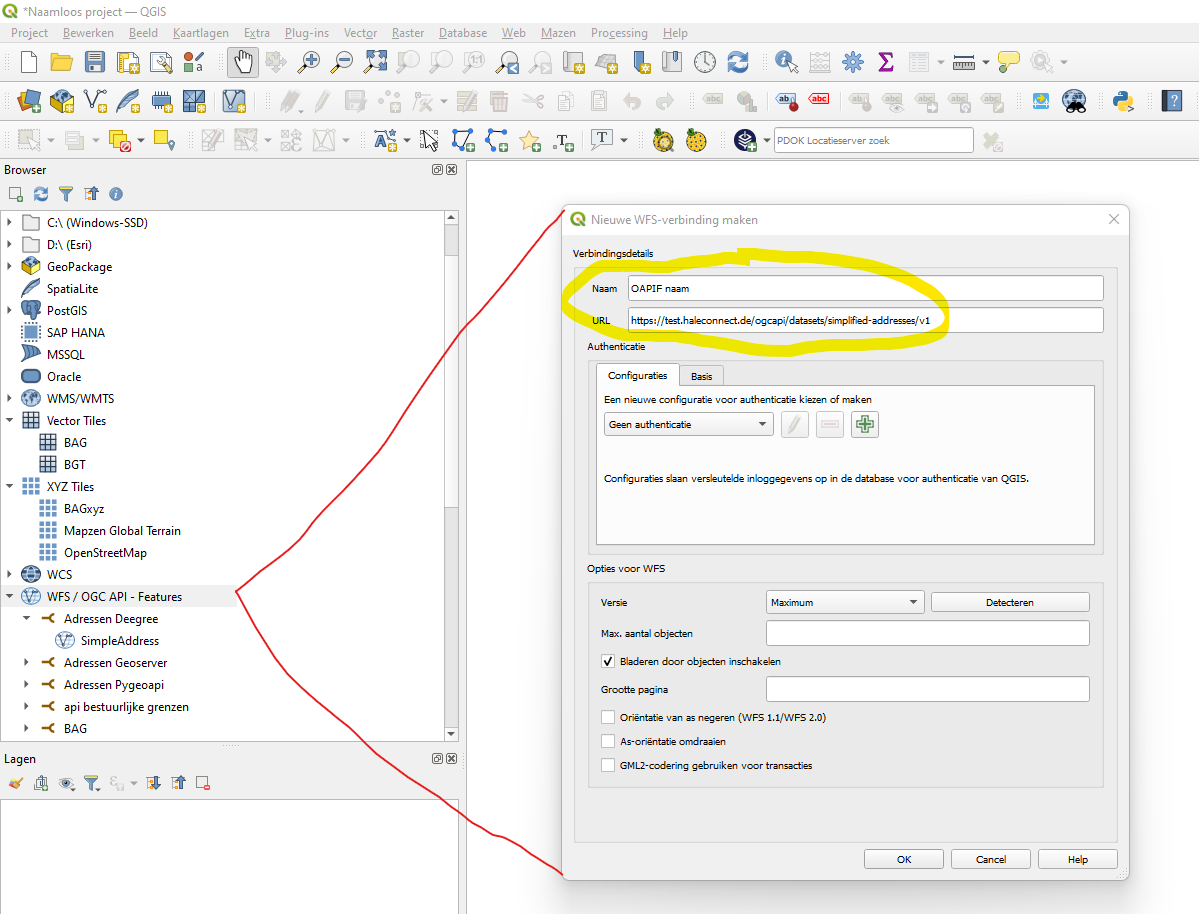The following findings show how Geoserver complies to the requirements.
CRS ETRS89 and WGS84
The required CRS's are available:
Predefined download
Link to metadata of dataset: passed at /collections level:
{"href":"https://www.nationaalgeoregister.nl/geonetwork/srv/dut/catalog.search#/metadata/a5f961e9-ebdd-41e2-b8e8-ab33ed340a83","rel":"describedby","type":"text/html","title":"Metadata"}
Link to INSPIRE feature concept dictionary: passed at /collections/collection level and at /collections level:
{"href":"https://inspire.ec.europa.eu/featureconcept/Address","rel":"tag","type":"text/html","title":"Feature concept Address"}
Link to the license: passed at /collections level:
{"href":"http://creativecommons.org/publicdomain/zero/1.0/deed.nl","rel":"license","type":"text/html","title":"License"}
bulk download
Link to bulk download of dataset: passed at /collections/collection level and at /collections level.
{"href":"http://test.haleconnect.de/ogcapi/datasets/simplified-addresses/collections/SimpleAddress/items?bulk=true","rel":"enclosure","type":"application/xml","title":"Download all features as GML"}
{"href":"http://test.haleconnect.de/ogcapi/datasets/simplified-addresses/collections/SimpleAddress/items?bulk=true","rel":"enclosure","type":"application/json","title":"Download all features as GeoJSON"}
GeoJSON
Items can be retrieved in GeoJSON by requesting:
https://test.haleconnect.de/ogcapi/datasets/simplified-addresses/collections/SimpleAddress/items?f=json&limit=1
or
https://test.haleconnect.de/ogcapi/datasets/simplified-addresses/collections/SimpleAddress/items/nl-imbag-ad-address-0003200000133985?f=json
GML
As input, a simple features GML file was used as produced by Wetransform from the complex feature GML with the transformation software Hale.
As output, the following links can be found at /collections/collection level. They can be used to download specific records.
{"href":"http://test.haleconnect.de/ogcapi/datasets/simplified-addresses/collections/SimpleAddress/items?bulk=true","rel":"enclosure","type":"application/xml","title":"Download all features as GML"}
or
{"href":"http://test.haleconnect.de/ogcapi/datasets/simplified-addresses/collections/SimpleAddress/items","rel":"items","type":"application/gml+xml;version=3.2","title":"Features as GML"}
(use parameter f=xml)
Describing encoding
There is a link to https://github.com/INSPIRE-MIF/2017.2/blob/master/GeoJSON/ads at /collections/collection level.
{"href":"https://github.com/INSPIRE-MIF/2017.2/tree/master/GeoJSON/ads","rel":"describedby","type":"text/html","title":"Encoding description"}

